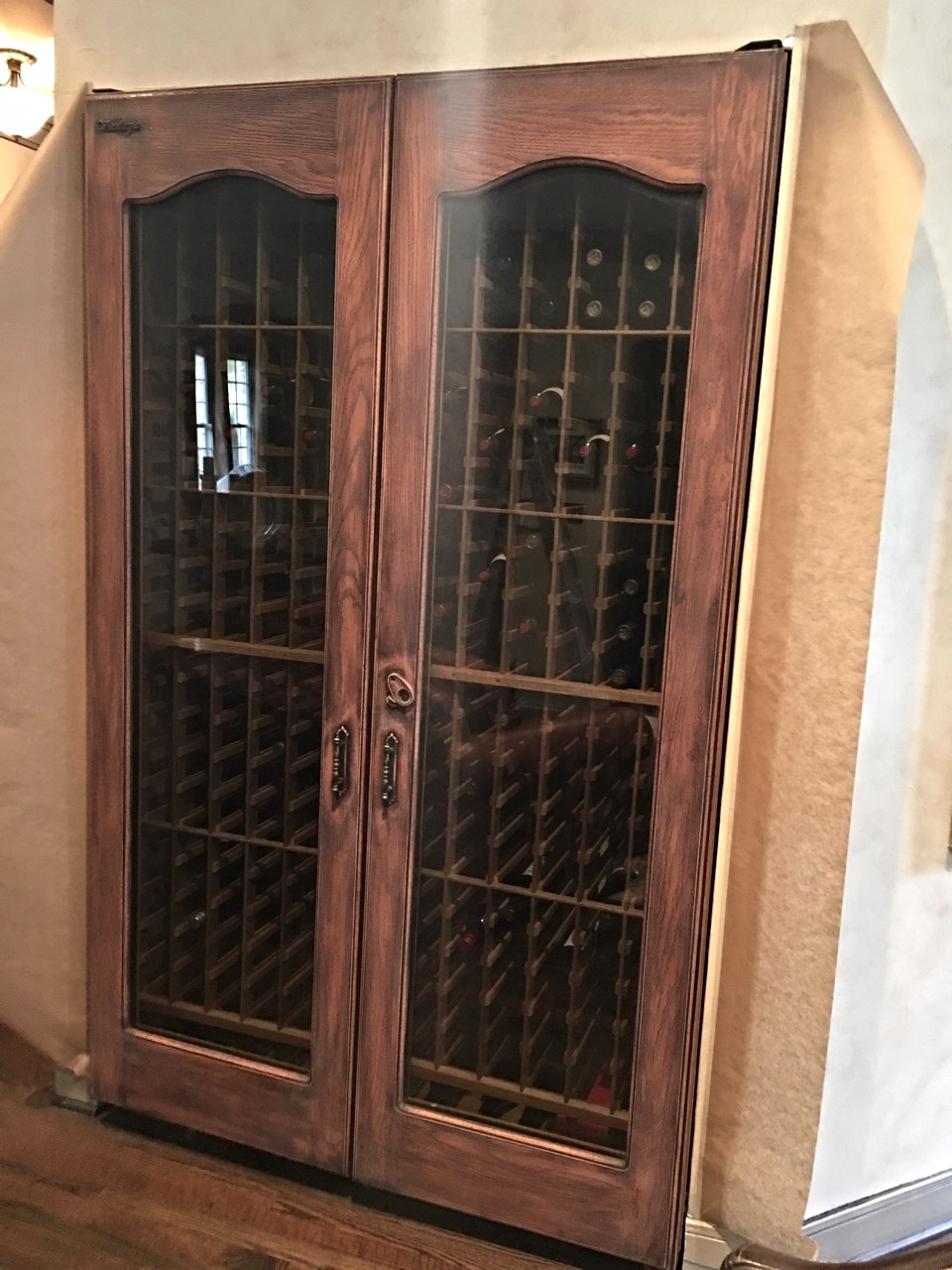I love the look of weathered wood and was really excited to transform a dark brown and red wine storage. The look of the doors and the placement of this piece is super cool and interesting and so the actual piece itself should be too.. right?!
Day 1:
Sanded to smooth down rough wood grain also to to prep for paint applications. I painted a thick white paint that drys slowly. Once 80% dry I sanded again to rub back in natural chucks for weathered look. Notice I used the term weathered and not distressed or shabby chic. I wanted it to appear natural and organic. Next, I slowly added large "under-grains" to the door. I made up the term "under-grain", I use it to describe the wood-grain that I intentionally control the color, shape, and size of. I do not use a wood graining tool instead I enjoy free handing my "under-grains" so I am able to manipulate each individual movement and tweak colors along the way. I always inform my clients - stages like these are typically scary and ugly before it gets better.... hehe
Day 2:
The heavy under-grains from day 1 are dry and time to add the next layer of graining. Like the first layer of under-graining, its all about the layers and details. I think to myself as I am applying the grains "consistently inconsistent". No matter what project I am working on, I try to avoid symmetry. The grains look choppy and messy right now but they will be cohesive when thetoning layers are applied. I finesse as I go and can always keep adding, so less is better at first. The key is to continuously stand back from the door and look at it from different perspectives.
Day 3:
Final day today- Today's goal is to use a toning glaze so the graining will officially be "under-grains" as well as make all the color of grains more cohesive. If there is a very heavy grain that I don't feel is being pushed back or buried enough, I apply the glaze a bit more heavily.




































